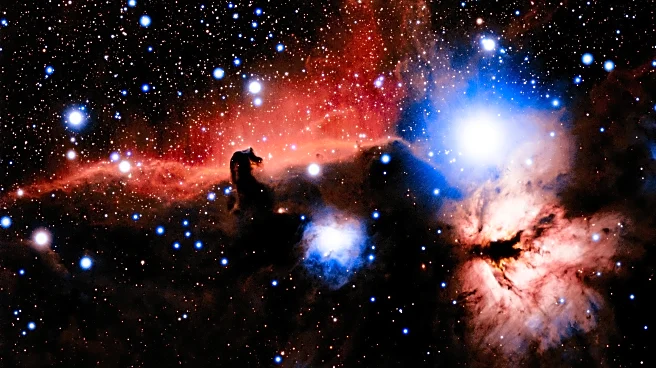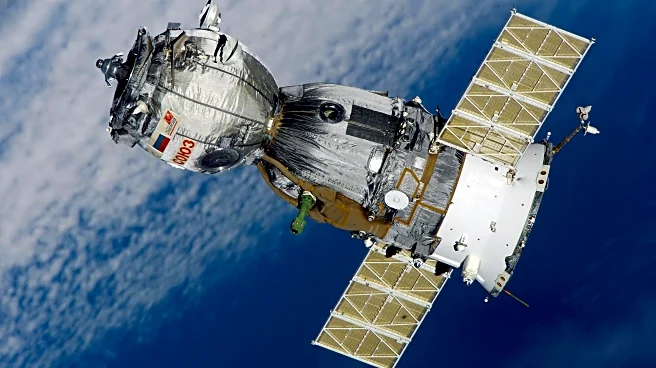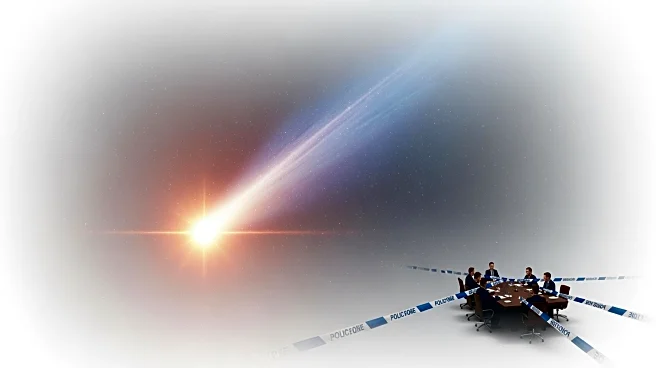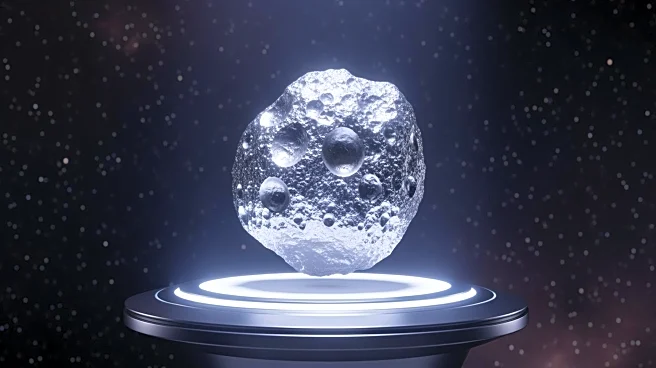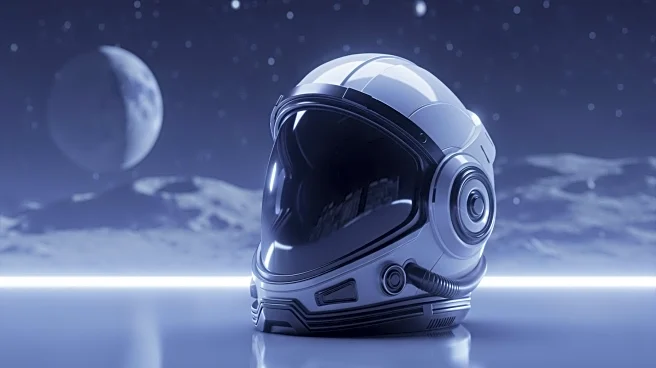What's Happening?
The interstellar comet 3I/ATLAS, first observed in the summer, has shown unexpected behavior as it nears the Sun. Scientists have noted 'non-gravitational acceleration' and a change in color to blue, which
is atypical for natural comets. This phenomenon was initially reported by NASA, suggesting that the comet might lose half its mass due to outgassing, potentially creating a large debris plume. However, Earth-based telescopes have been unable to observe these changes directly due to the comet's position behind the Sun. The European Space Agency's Jupiter Icy Moons Explorer (Juice) is scheduled to observe the comet on November 2 and 25. The comet is expected to make its closest approach to Earth on December 19, at a distance of about 167 million miles.
Why It's Important?
The unusual behavior of comet 3I/ATLAS raises questions about its nature, with some scientists speculating about the possibility of an artificial origin due to its non-gravitational acceleration. This has implications for our understanding of interstellar objects and their interactions with the solar system. The comet's blue color, which could be due to ionized carbon monoxide, challenges existing models of cometary composition and behavior. The scientific community is keenly interested in these observations, as they could provide new insights into the characteristics of interstellar comets and their potential technological signatures.
What's Next?
As 3I/ATLAS becomes visible again in early December, ground-based telescopes will have the opportunity to observe it more closely. This will allow scientists to verify whether the comet has lost mass as predicted or if its behavior suggests an artificial origin. The upcoming observations by the ESA's Juice mission will be crucial in determining the comet's composition and trajectory. The scientific community will be closely monitoring these developments to better understand the nature of this interstellar visitor.
Beyond the Headlines
The comet's behavior has sparked discussions about the possibility of artificial objects entering our solar system, a topic that has gained attention with previous interstellar objects like 'Oumuamua. The potential for technological signatures in space objects could redefine our search for extraterrestrial intelligence and challenge our understanding of natural celestial phenomena. This event highlights the need for continued investment in space observation technologies and international collaboration in space research.


